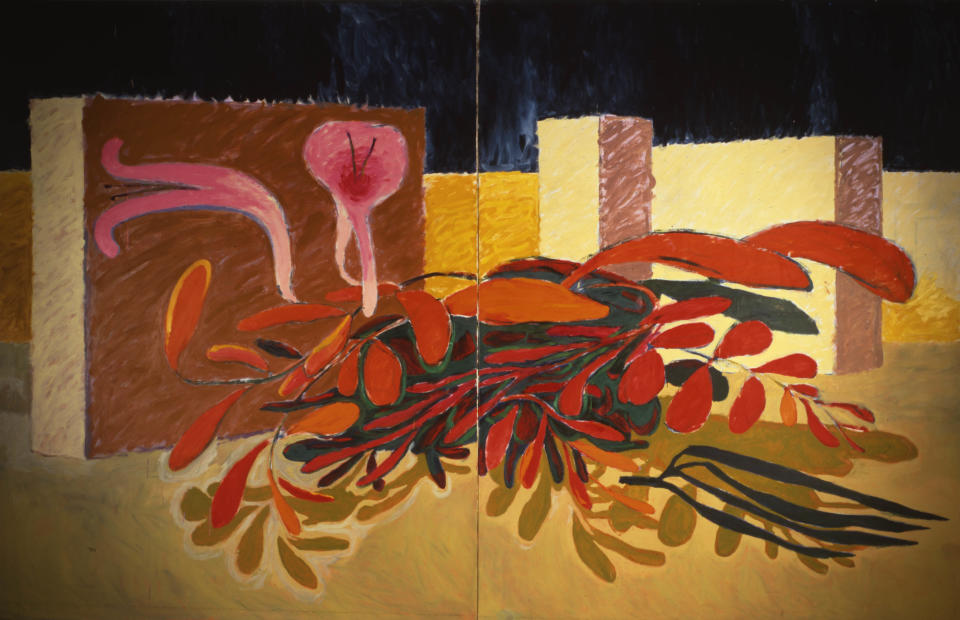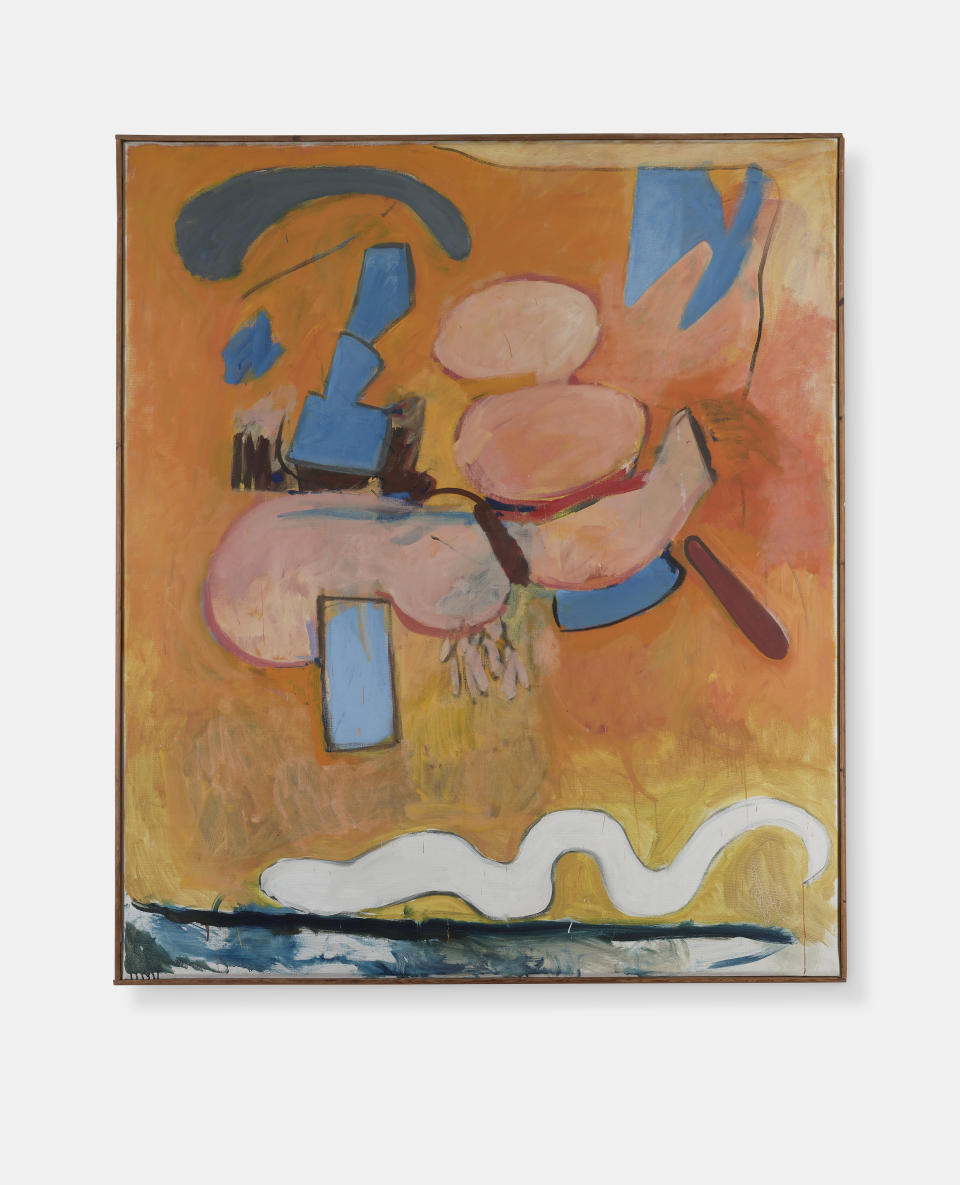Timothy Taylor Looks at the Mind, and Drive, of Artist Victor Willing
- Oops!Something went wrong.Please try again later.
- Oops!Something went wrong.Please try again later.

The next 12 months will be big for Timothy Taylor, one of London’s top gallerists who represents 20th and 21st century greats including Alex Katz, Diane Arbus, Kiki Smith and Sean Scully.
Taylor is expanding into a bigger New York gallery, and moving from Chelsea to TriBeCa, while in London he’s set to realize a long-held dream of a show.
More from WWD
Inside 'Another Justice: Us Is Them' at the Parrish Art Museum
"Diego Rivera's America" at San Francisco Museum of Modern Art
A Look at the Grand Reopening Museum of Contemporary Art San Diego
In mid-September, Taylor will stage the first major exhibition in decades of works by the British artist Victor Willing, whom he knew and admired.
Taylor was just getting started in the art business when he met Willing, a complex man whose troubled relationship with his artist wife, Paula Rego, is well documented.
Willing, whose works are part of the permanent collections at the Tate and the Saatchi Gallery, among others, lived with multiple sclerosis for much of his adult life, and died in 1988 at the age of 60.
“One of the things I have always wanted to do as a gallery is to bring generations of artists, either younger or older, to a new audience. This is about bringing Victor to a new audience. We’re recognizing who he is, and what he did, but in as fresh a way as I can,” says Taylor, who is putting on the show with support from Willing’s family.
Taylor had seen a series of Willing shows at Bernard Jacobson Gallery in Mayfair, where he was working at the time, “and I knew his work well. I was just, you know, sweeping the floor, but I was very aware of what was happening in the exhibition space, and very aware of the prestige that his work attracted, and I remember him taking everything quite seriously, which is not surprising.”

Courtesy image
Taylor is taking a close look at Willing’s work in the latter part of his life as his disease progressed, the colorful large-scale paintings he did from his wheelchair and the smaller, brightly lit ones that appear to defy his physical pain, and his deteriorating condition.
The exhibition will feature the 1982 painting “Cythère,” the mythical birthplace of Venus. It is a tangle of vegetation done in sunset pink, orange, red and green.
It will also showcase Willing’s 1978 work “Night,” which shows a sailboat blowing sideways in the wind, inside a room. While some of the details are surreal, the colors are warm and upbeat: orange, bright blue, yellow and green.
“Man in Flames,” a work on paper, could be a work of Christian art, and was possibly inspired the decades that Willing lived with Rego and their family in and around Lisbon, a city packed with lavishly decorated churches and dramatic depictions of martyrs and saints.
“Everything prior to [Willing’s diagnosis] related to a more traditional perception of what was going on in the British art world at the time,” Taylor says.
“But then he started making paintings with this extraordinary clear, visual identity. I think he actually realized that his disease defined him, and he left a body of work that he would never have made otherwise. That’s an interesting dilemma to have to deal with, and it certainly wasn’t an easy one,” Taylor says from the office of his Mayfair gallery on Bolton Street, not far from Green Park.
Taylor believes the timing is right for the show.
“There is a clarity of these visual images: they’re figurative, abstract, and very confidently executed, even though there’s this fragility to them. And it just seems to me that there is a place in today’s awareness for this kind of subject matter. A lot of it relates directly to people’s concerns, and sense of self, at the moment. I’m not sure I would have been able to do this show five or 10 years ago,” he says.

Courtesy image
The show is emblematic of the mood among London denizens, post-pandemic. Two years of COVID-19 have left a lasting legacy in the minds and hearts of people who, all of a sudden, were forced to confront emotional and physical pain, loss, paranoia, isolation, the feeling of being vulnerable, and trapped.
Many of the show’s works are enormous, so big that Taylor can barely fit them in his London gallery. One of the paintings he will manage to hang measures 8 feet by 16 feet.
“They were quite ambitious paintings. One of them is so big, I can’t actually even hang it downstairs. He was working on a very grand scale. There’s often quite a lot of empty space in them, but the colors are strong, and the line is always strong. They’re always a very physical element,” Taylor says.
While he may believe it’s the right time to put on a show of Willing’s work, Taylor — a typically self-deprecating Englishman — is unsure whether it will be a success.
“People might not get it, or want it, and then that will be that. But it’s still a personal experience for me, and I’m very much looking forward to it for that reason,” he says.
Even as he prepares for this major show, Taylor, a father of four who is married to Lady Helen Taylor, the daughter of the Duke and Duchess of Kent, Queen Elizabeth’s cousins, is moving forward on other fronts, and in other countries.
In New York, he’s moving from a tiny gallery on West 20th Street in Chelsea to a big industrial space on Leonard Street in TriBeCa. “It was originally christened Timothy Taylor 16 by 34, because it was 16 by 34 feet,” he says of the old gallery, which is now closed.
“It was sort of wonderful, and we did some great shows there. But after five years, it did feel that the opportunity for the gallery, and the artists that we represent, wasn’t really being properly fulfilled in a space of that size. I thought that it was the chance to either pull out all together, and just leave New York, or expand into it, and find something which represented the excitement of the moment without really going head-to-head with anyone else,” he says.
Designed by Studio MDA with a black-and-white exterior, the new space spans 6,000 square feet, and is set to open in early 2023.
Asked what sort of trends he’s been seeing back in his London gallery and among collectors post-pandemic and post-Brexit, Taylor says people are doing their homework, researching every detail — and price — of the art they plan to buy.
Taylor says things in London have returned to a “different sort of normal. People are much more aware of what they’re coming to see before they see it. They’ve found themselves comfortable researching, looking, identifying and seeing things online. And then they go and look at the real thing.
“To some extent, it’s expanded the market, but I think London is still trying to work out what it wants to look like post-Brexit. The hotels are full, and there are a lot of people here. It feels pretty good, but not like it did before.”
Best of WWD
Sign up for WWD's Newsletter. For the latest news, follow us on Twitter, Facebook, and Instagram.

